Whatever it was, it is hard to argue that whenever you go, you will spend for food significant part of your daily budget. Of course, every person has his own approach for travelling and life style (that depends a lot from how much money do you have) and of course I don’t want to say that we are the winners and you are the losers only if you think and do in other way. All that I will describe below are my own thoughts and observations and if you have another point of view you are more than welcome to write it down in the comments.
Anyway if you are reading this article I assume you are the fan of low-budget travelling, so here we go. (One important issue - usually we – my boyfriend and I - eat lesser that others. So you will probably spend more only because of the portions, however if you will follow these advices you will spend half as much from your current expectations).
I have been to quite many different countries around the world and I usually write down all our expenses. The interesting part begins when we analysed how much money we spend in each country. It's interesting that weather we go we usually spent 18% of our daily budget on food.
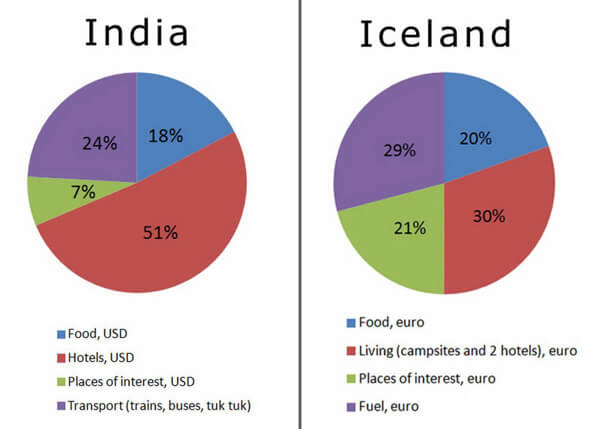
For example, while traveling around Iceland we spent only 123 euro (11% of our total budget) for food, that was 8 euro per day for 2 people - taking to consideration that Iceland is in one of the most expensive countries in the world! Probably you are interested in how did we do that?
Here are three simple steps how to save money of food when travelling:
- Try to find the cheapest supermarkets in particular country – this will save significant part of your daily budget as prices usually vary a lot. For example, in Iceland use Bonus, in many European countries there are LIDL that sell many products by lower prices.
First of all, we were travelling by car and of course this was a great benefit as we usually bought products in the supermarkets.
In Iceland the cheapest supermarkets network is Bonus http://www.bonus.is/ (with drunken pink pig as a logo). You may find all bonus supermarkets in Iceland on their website by clicking “Finna Bónusverslun” under the logo.
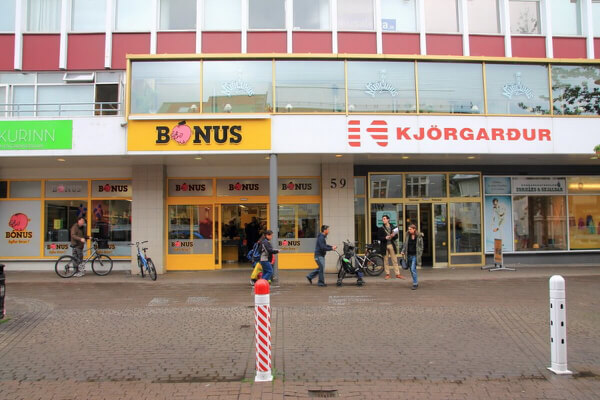 Supermarket Bonus in the centre of Reykjavik
Supermarket Bonus in the centre of ReykjavikIf you are travelling around Europe you will find out that the cheapest is LIDL network. Keep in mind that of course not all products are worth buying in LIDL (for example, we noticed that vegetables and fruits could be more expensive), but they sell many items much cheaper than their normal price.
- Buy products that are typical for this country. Be flexible. If you are used to eat eggs for breakfast every morning, but they are too expensive in this particular country, change your mind and buy yoghurt instead.
It is easy to say but of course not so easy to do. Of course you have a lot of habits. For example, you can’t imagine your life without fried eggs in the morning. But suddenly you find out that eggs are soooo expensive in this particular country. First, you feel panic, oh how will I survive without my favourite fried eggs? But then, you calm down and try to find alternative for your breakfasts (let’s imagine, this country has cheap tasty yoghurt).
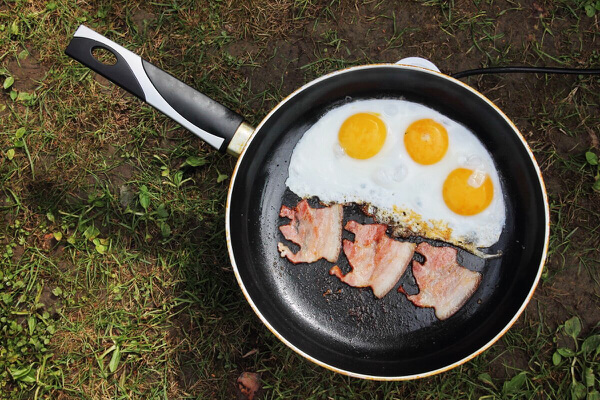 Breakfast in the campsite in Austria
Breakfast in the campsite in AustriaEvery country has something cheap, typical products that are eaten by the majority of people. The problem is you can’t find these products right away. Of course, you need time to adapt to new culture, habits of locals, etc.
For example, in Iceland meat was very expensive in Iceland, so we cooked hot dogs or spaghetti with sausages, instead. In Asia cheese and wine is too much expensive. Beer is also much more expensive than in Germany and Ukraine, but it was hard to avoid it at all, so we drank beer sometimes.
One example from our latest trip. We have been travelling around Croatia for 3 weeks and there were so tasty bread in LIDL (by the way the best bread in Croatia is in LIDL, this is not advertisement, just fact! Our lunch mostly consists of baguette with spread or meat with vegetables. It was very convenient, cheap and tasty.
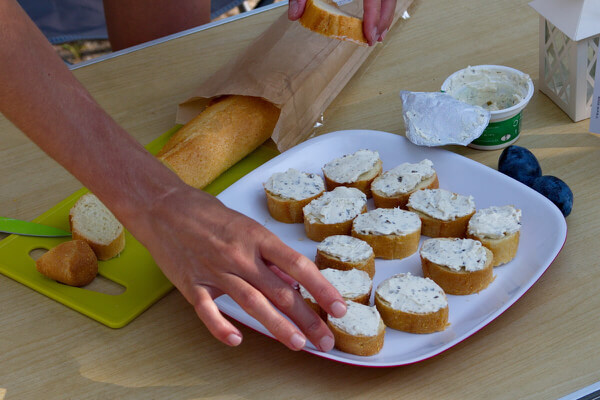 Our lunch in Croatia
Our lunch in CroatiaWhen we drove in Albania first I was shocked by absence of supermarkets. Our fist city was Shkoder - quite big city. We parked our car not far away from the city center and made a stroll by one of the noisy street with a lot of shops. There were small shops with food (we bought a beer in one of such shops), some bars and fast food stalls. But I wanted big supermarket I used to!
We saw many bakeries but all bread seems weird for me, there were no baguette I got used to in Croatia! We felt hungry and disappointed.Finally. we bought two pieces of pizza in one the fast food stall and went to camping. I usually get lost when we arrived to new country; I need some time to understand what to eat there.
Later, we found out that there are very tasty vegetables and fruits in Albania.
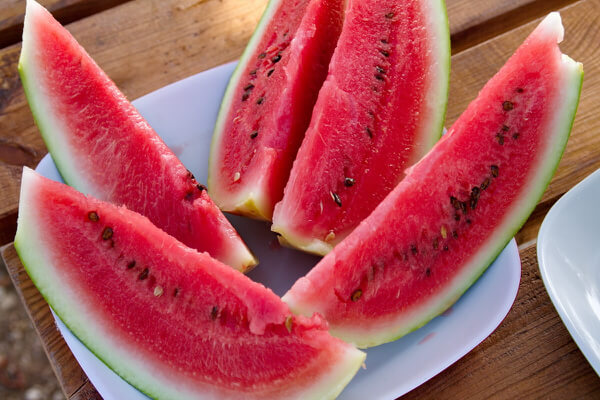 Our lunch, one of the best watermelon in my life in Albania
Our lunch, one of the best watermelon in my life in AlbaniaAlso they had many types of white cheese and we did a tasty salads a-la “Greece salad”, for example. By the way we throw up our traditional breakfast with milk and cereals as milk was twice as much expensive in Albania as in Ukraine. We ate fried eggs instead or made oatmeal with condensed milk we took with us from Ukraine.
- Avoid restaurants if they are too expensive (as in France). Instead, eat street food and go to restaurants in South Asia.
We avoid restaurants in Europe, we can do this as we are living in campsites and cook dinner by our own. For example, in France restaurants were extremely expensive. We bought sausages, cheese and wine or cider in supermarket and made a delicious romantic dinner with grilled sausages in the open air (that was probably 10 times cheaper than the same food in restaurant)!
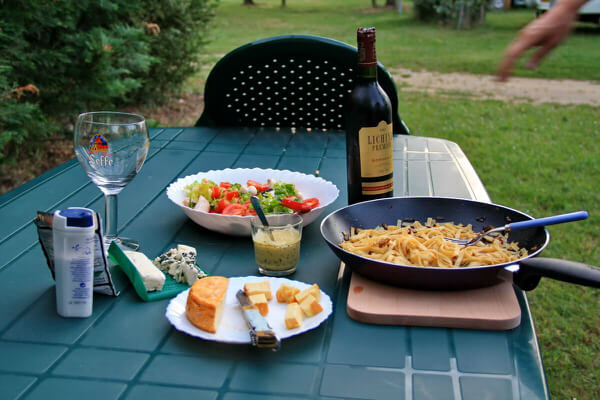 Our delicious dinner in France
Our delicious dinner in FranceThe only country in Europe where we visited restaurants was Italy. Pizza was not so expensive there, but was so tasty and hearty. (There was another problem with restaurants in Italy called “coperto”, sometimes it was up to 2 euro per person as a compulsory service fee and was rather frustrating when we ordered pizza for 5 euro but pay 9 euro instead because of that. Usually restaurants write down about coperto in menu, but not always).
 Pizza in Napoli
Pizza in NapoliBut the situation with restaurants changes dramatically when we have travelled around South Asia. We didn’t have opportunity to cook there as we lived in hotels and to buy a food from supermarkets was usually even more expensive than just to go to the restaurant or eat street food. All over Asia street food is delicious, varied and cheap. For the first time it hard to get used to eat in such places but in few weeks you can’t imagine your life without all that samosa, pad thai and fried corn.
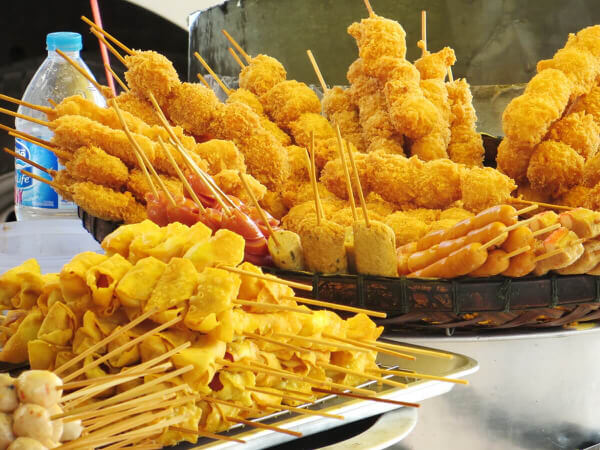 Street food in Thailand
Street food in ThailandIn south Asia eat what local eat and everything will be alright! We spent one month in India and one month in Nepal and ate in such place my mom better not to know about.. And everything was ok, we just had a stomachache several times. At the same time, my father got severe sick in 5 star hotel in Egypt. I mean every person is unique and you never know what could happen, but if you will eat similar to locals – it will reduce your chances to fall sick dramatically.
 One of my favourite meal in Thailand - Pad thai
One of my favourite meal in Thailand - Pad thaiBy the way food in SA seems to me healthier than some of my country and European food, as they almost don’t use meat and bread, they eat a lot of vegetables and pulse. We spent almost equal sum on food in South Asia (Thailand, Bali and Vietnam) and in Europe (10 euro in Europe per day for 2 persons and 10 USD in Asia per day for 2 persons). While in India we spent only 5 USD per day for 2 of us, as well as in Nepal.
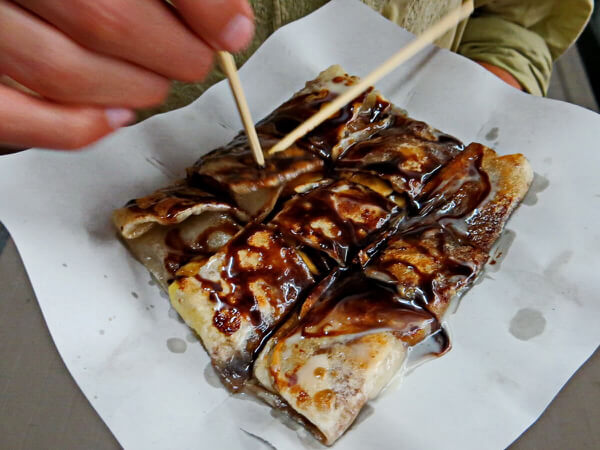 The very tasty sweet pancake with banana and chocolate, made on the streets of Thailand
The very tasty sweet pancake with banana and chocolate, made on the streets of ThailandThe only thing that we prepared during both our trips to Asia was tea or coffee. If you like tea as much as I do, I really advise you to bring small water-heater with a cup, and make tea in the hotel. It really saves many dollars for us.

